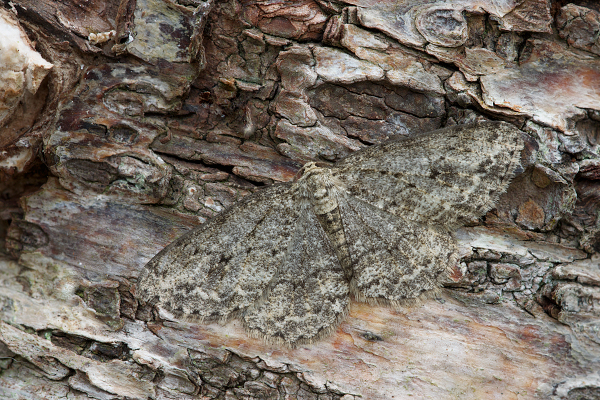June
This is one of my favourite moths. No two individuals are the same.
Nikon D800, 200mm macro lens, fill-flash, tripod.
Despite the weather picking up a bit last week, moths are still pretty scarce this year. Any that I have managed to find have been very much in short supply. I suspect this is a knock-on from last year, which was also poor for butterflies and moths generally. I remain hopeful as the season progresses things may improve a bit, but I think that maybe be wishful thinking?
Peach Blossom Thyatira batis
This attractive moth is not easily missed or confused with any other species. Adults have olive brown forewings with large blotches, which vary in colour between individuals. The blotches are generally white and tinged with pink with brown centers. The pink colour varies in intensity and some individuals are more richly marked than others.
It inhabits deciduous woodland, hedgerows and mature gardens, especially where bramble flourishes. Adults tend to be secretive and not easily found during the day. The larvae feed on bramble after dark remaining concealed at the base of the foodplant during the day.
Lesser Swallow Prominent Pheosia gnoma
This is a relatively common moth. The forewings are ochreous-white with a dark brown elongated patch along the front edge of the wing. The hindwing is similar in colour with a small dark spot. The thorax and abdomen are dark brown.
The adults are found in a wide range of habitats particularly bogs, fens and damp woodland. The larvae are more elusive than the adults and have only been seen on a few occasions in Northern Ireland.

Lesser Swallow Prominent Pheosia gnoma
Adults of this species often rest on branches or the trunks of trees.
Nikon D800, 200mm macro lens, fill-flash, tripod.
Small Engrailed Ectropis crepuscularia
This is a very variable moth in colour and pattern although individuals of this species tend to be lighter and more frequently encountered than the scarcer Engrailed Ectropis bistortata. Adults often rest on the bark of trees, or on rocks.
A species normally associated with woodland, bogs, limestone uplands and other scrubby areas.

Small Engrailed Ectropis crepuscularia
This species is cryptic when resting on the trunks of trees, blending almost seamlessly with the bark.
Nikon D800, 105 mm macro lens, fill-flash, tripod.
Pale Prominent Pterostoma palpina
This curiously-shaped moth resembles a dead leaf when seen at rest. The Adults are pale brownish-grey. The forewings have fine blackish streaks and are heavily scalloped at the edge. The moth rests on the trunks of trees, or among ground vegetation with its wings wrapped around its body. Adults are easily recognised by the elongated palps on the front of the head and tufts on the tip of the abdomen.
The moth is fairly widespread in a range of habitats that contain poplar, aspen and sallow. I would suspect in view of the scarcity of poplar and aspen in Northern Ireland it seems more likely that it may be using sallow as its main foodplant.

Pale Prominent Pterostoma palpina
This is an extremely photogenic species, which resembles a dead leaf when at rest among fallen leaves.
Nikon D800, 200mm macro lens, fill-flash, tripod.

